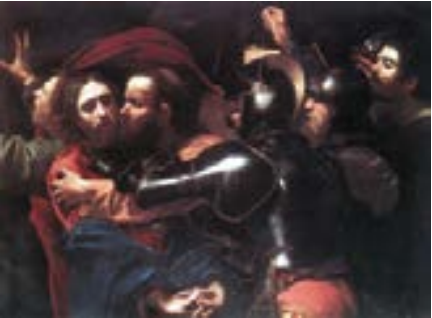I never saw Caravaggio’s The Taking of Christ (or, The Kiss of Judas) during my month in Odessa this summer. The painting was stolen the night before I turned up at the museum door.
Ukrainian and American news reports mourned the loss without mentioning provenance. Even the thieves might have believed in the Odessa “Caravaggio”; Soviet authorities promoted its authenticity to boost the bloc’s cultural cachet. But the criminals who struck at the Museum of Western and Eastern Art on Pushkin Street in late July made off with only a copy of The Taking of Christ.
The original hangs in Dublin, where it was rediscovered in 1990 after having been lost for over a century. In light of that finding, the Odessa canvas, once accepted as real, was definitively discredited. The wall had fallen, making way for an influx of Western art experts and tourists, but suddenly there was nothing to see.
Caravaggio relinquished the subtleties of mannerism and the Raphaelite ideal, relying instead on observational grit. Taking his example, I tried to see Odessa for what it was, just beneath the refurbished facades: a new Ukrainian port of flashy moguls and fleshy whores, yes, but also of old, kerchiefed women crying in the markets over the loss of a priceless canvas.
Back from the museum, I downloaded photos of the Odessa and Dublin paintings, which even experts find identical. Caravaggio infamously used the urban poor as models, and his empathy for them, his recognition of the ways in which their suffering dramatized them as individuals, were new to visual art. In the painting that was sliced from its Odessa frame, the viewer was in effect made to become a Christ for Christ, feeling pain and grief at his taking by three Roman legionnaires.
The canvas holds seven figures in all. The man fleeing at the front is the apostle John. Behind him is Christ, wringing his hands at being bussed by Judas. The man at the back is a self-portrait. Caravaggio typically ignored nature’s light in favor of thick theological shafts of the stuff; here he painted himself into the upper right corner, holding aloft a lantern, an additional source of light.
Caravaggio was both a devout Catholic and a gangster who in 1606 murdered a man in a fight, then fled Rome. Odessa’s painting, then, frames a trinity of portraits: Caravaggio the unregenerate Judas kissing off Caravaggio as Jesus—the great martyr to art, the genius of a novel religion of the self. (After many a debauched night, the artist was dragged away by Roman authorities—not quite Pontius Pilate’s men, but descendants.) The only whole version of the artist—the...
You have reached your article limit
Sign up for a digital subscription and continue reading all new issues, plus our entire archives, for just $1.50/month.
Already a subscriber? Sign in





